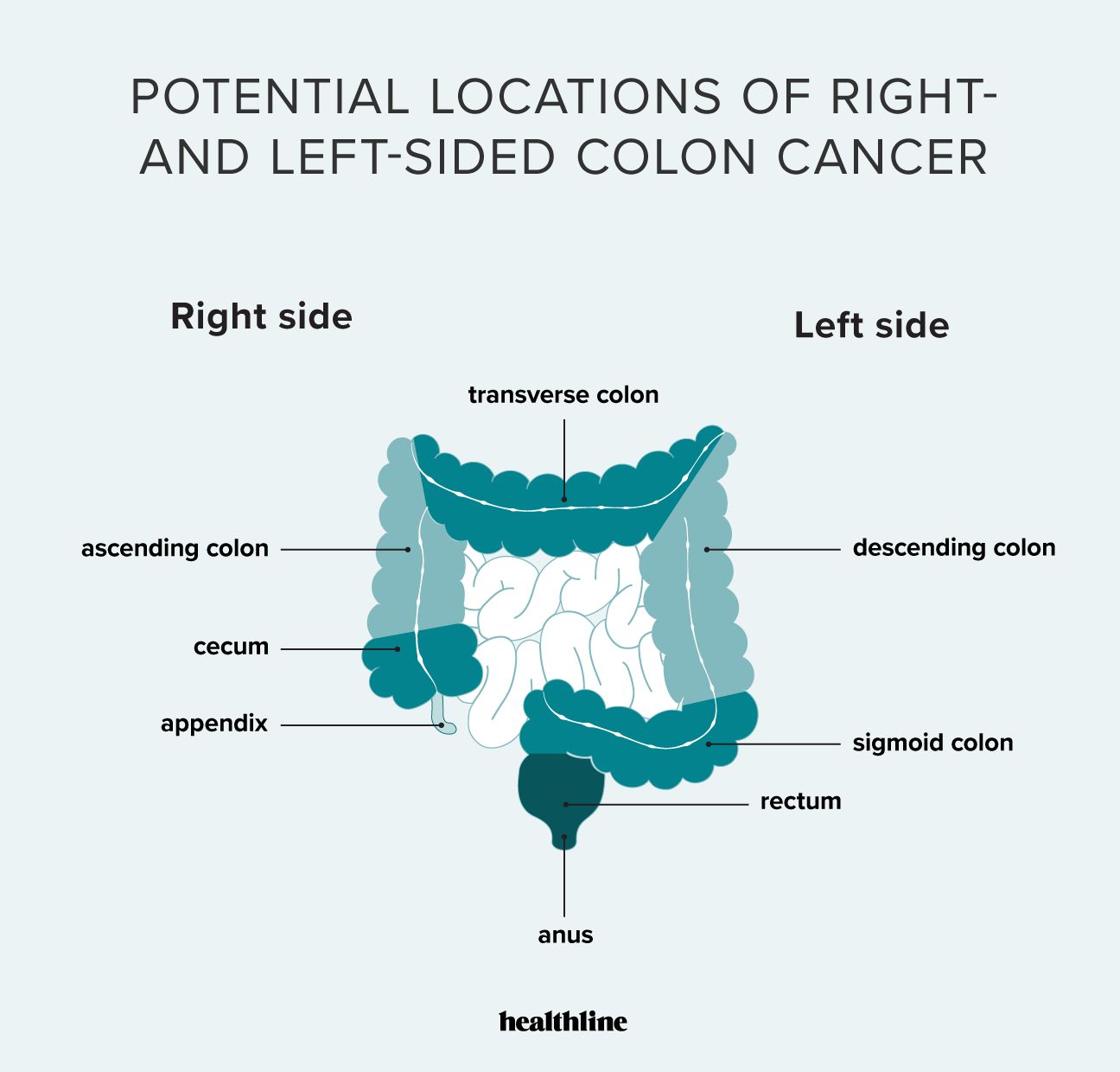Right-sided colon cancer may cause different symptoms than left-sided colon cancer. The first sign of right-sided colon cancer is often anemia caused by bleeding.
Colon cancer is one of the most common cancers diagnosed in the United States. It can develop anywhere along your colon, which comprises three parts:
- Ascending colon: This is the first part of your colon that attaches to your small intestine. It moves stool upward.
- Transverse colon: This is the middle part of your colon where stool moves laterally through your intestines.
- Descending colon: This is the final part of your colon that moves stool downward until reaching your rectum and anus, where it then leaves your body.
The right side of your colon contains the ascending colon and
Read on to learn about how right-sided colon cancer differs from cancer that develops on the left side.

Like many types of cancer, colon cancer often doesn’t cause symptoms in the early stages until the tumor grows large or spreads.
When symptoms do develop, they may include:
- new diarrhea or constipation
- blood in your stool
- rectal bleeding
- lower abdominal pain
- a noticeable lump in your abdomen, more commonly on the right side
- bloating
- unintentional weight loss
- fatigue
- abdominal cramps
- inability to pass gas
- general feeling of unwellness
The
Left-sided colon cancers occur more frequently than right-sided cancers.
This may be because left-sided tumors are easier to detect during a colonoscopy.
However, in recent years,
This right side of your bowel is wider than the left side, so tumors may grow larger before causing symptoms. The
Symptoms of anemia include:
Right-sided tumors that spread to distant locations
Early symptoms of right-sided colon cancer
In a
- diarrhea
- symptoms related to bowel obstruction
- constipation
In a
In 85 people with left-sided cancer, rectal bleeding was a more common initial symptom.
Is right-sided colon cancer worse than left-sided colon cancer?
Right-sided colon cancer
Colonoscopy misses about
Hereditary cancer syndromes, except for familial adenomatous polyposis, tend to occur on the right side. Lynch syndrome is the most common hereditary cause of colon cancer.
People who carry a gene mutation associated with Lynch syndrome have more than an
In the
- bowel obstruction
- rectal bleeding
Rectal bleeding was the most common left-sided colon cancer symptom in the aforementioned
When left-sided colon cancer spreads, it
Doctors often use 5-year relative survival rates to measure cancer survival. This statistic looks at how many people with a cancer are alive 5 years later than people without the cancer.
Here’s a look at the 5-year relative survival rates of colon cancer by stage in the United States from
| Stage | 5-year relative survival rate |
|---|---|
| Localized | 91% |
| Regional | 73% |
| Distant | 13% |
| All stages | 63% |
Research on whether people with right-sided colon cancer have worse survival has been mixed. Some studies suggest early stage cancer on the right side may have a better outlook, and late stage cancer on the left may have a better outlook.
The research
In a
In a
Another
In a
Of those with right-sided disease, 80.4% were alive 12 months later compared with 90.5% of people with left-sided disease.
Other factors influencing survival
Factors associated with a better outlook for people with colon cancer include:
- earlier cancer stage
- lower cancer grade
- no signs of cancer along the edges of surgically removed tissue (positive margins)
- no growth into lymph or blood vessels
- lower levels of carcinoembryonic antigen (CEA)
- no bowel obstruction or perforation
- not having mucinous adenocarcinoma, signet ring cell carcinoma, or small cell carcinoma
- tumors with a DNA change called
microsatellite instability (MSI) , which mostly occurs inright-side tumors - not having KRAS or BRAF gene mutations
Research suggests that right- and left-sided colon cancers may have different initial symptoms. The first sign of right-sided cancer seems to be anemia caused by blood loss.
It’s unclear whether right-sided colon cancer is associated with a poorer outlook. Some research suggests that early stage cancers on the right side may have a better outlook but late stage cancers on the left side may have a better outlook.









